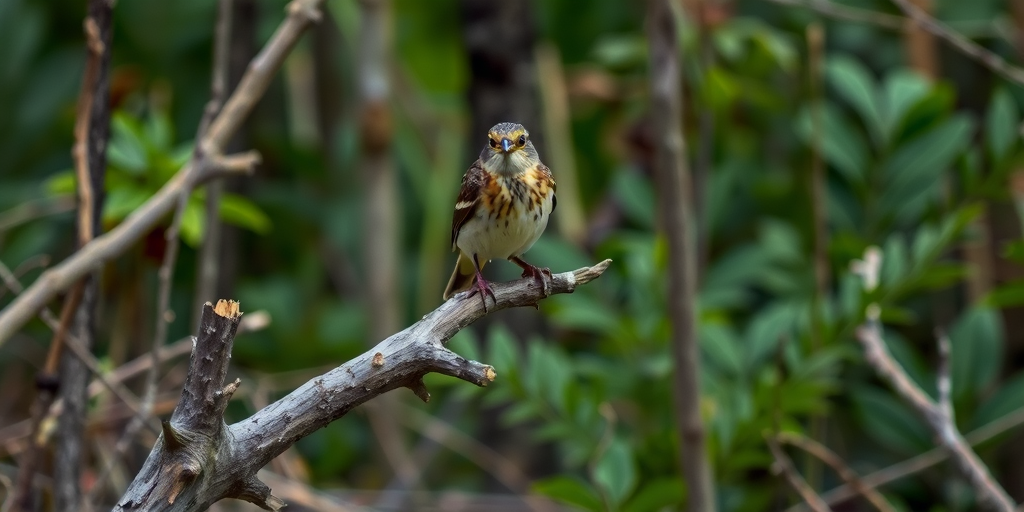How do birds negotiate the shrinking landscapes of fragmented forests? Recent studies reveal fascinating shifts in behavior that contrast stark species declines with surprising adaptability in generalists. Dr. Harry Jones’s research in the Colombian Andes exposes significant vulnerabilities in specialized species while underscoring adaptive foraging, mating, and territorial modifications. The article examines these behavioral transformations to illustrate how birds adjust their routines amidst habitat disruption, offering a hopeful perspective on their capacity to persist despite environmental challenges.
Population Impacts and Adaptive Strategies: How Birds Cope with Habitat Fragmentation

Fragmented habitats reshape bird population dynamics by inducing shifts in population structure and genetic connectivity. Recent studies indicate that fragmentation creates isolated bird populations, where beta diversity reaches dissimilarity levels near 0.8. The majority of discrepancies between fragments, estimated at 85–90%, result from species turnover rather than mere numerical loss, illustrating that the composition of bird communities transforms substantially in partitioned ecosystems. These changes are particularly pronounced in fragments below 100 hectares, where functional diversity declines steeply despite the presence of larger patches.
- Reduced genetic diversity
- Increased species turnover
- Dispersal limitations
- Population bottlenecks
Field research employing mist netting and transect surveys has clarified how dispersal limitations and restricted genetic flow contribute to population bottlenecks in fragmented forests. The combined challenges of diminished genetic variability and increased species turnover signal that birds’ adaptive capacities are tested as they navigate altered dispersal patterns in patchy environs. Such findings underscore the critical role of comprehensive, methodical surveys in deciphering the genetic and demographic implications of spatial separation in avian communities.
Adaptive strategies for population sustainability emerge as birds adjust territorial ranges and breeding behaviors in response to connectivity disruptions. The persistence of bird communities hinges on promoting genetic flow through habitat corridors and reducing the isolation of fragmented populations. Scientific insight into these adaptations highlights the necessity for targeted measures that reestablish connectivity between fragments, ensuring that bird communities maintain the resilience required to persist in isolated landscapes.
How Birds Cope with Habitat Fragmentation: Hope Prevails

Bird communities face considerable challenges in fragmented landscapes, where habitat patches fail to sustain the full complement of species observed in expansive, continuous forests. Studies reveal that even relatively large fragments of 150–170 hectares cannot support complete bird communities. These limitations highlight the dire need for long-term conservation actions that address both the physical degradation of habitats and the underlying ecological processes driving species turnover. The disrupted vegetation structure and persistent edge effects demand immediate attention through strategic measures that ultimately strive to restore connectivity and improve the sustainability of fragmented avian populations.
- Restoration of interior habitat structure
- Establishment of conservation corridors
- Enhancement of connectivity between fragments
- Protection against selective logging
- Monitoring and research initiatives
Integrated conservation strategies must focus on reintroducing lost elements of mature ecosystems and designing landscapes that support wildlife corridors. Utilizing initiatives similar to Boreal Birds Need Half, conservation practitioners are rethinking management approaches to promote ecological continuity and support species sensitive to habitat fragmentation. Emphasis on restoring vegetation with late successional species and mitigating adverse edge effects forms the backbone of these corrective measures. Proactive planning and precise implementation of these strategies offer a beacon of hope for sustaining diverse bird communities even amidst pervasive habitat disturbances.
Urgent, coordinated efforts among policymakers, community advocates, and scientists remain critical to achieving long-term resilience in bird populations. By collaborating to implement conservation solutions and continuously assessing ecological outcomes, stakeholders can shape adaptive management practices that secure the enduring survival of bird communities in fragmented ecosystems.
Final Words
In the action of bird adaptation to fragmented environments, the study showcased key behavioral shifts, population realignments, and microhabitat modifications.
The article detailed feeding adjustments, edge phenomena, conservation approaches, and scientific research that reveal how birds cope with habitat fragmentation.
Special focus remains on How Birds Cope with Habitat Fragmentation, emphasizing resilience across species.
Bold strategies and innovative measures guide future conservation efforts, inspiring optimism for nurturing sustainable bird communities.
FAQ
How does habitat fragmentation affect migrating bird populations?
A: Habitat fragmentation disrupts traditional migration routes, forcing birds to travel longer distances between suitable habitats. This increases energy expenditure and mortality rates during migration, particularly affecting long-distance migrants.
How does habitat destruction affect birds?
A: Habitat destruction reduces available nesting sites, food sources, and shelter for birds. The loss of specialized environments leads to decreased population sizes, breeding success, and species diversity.
What animals suffer most from habitat fragmentation?
A: Large predatory birds and specialized species with specific dietary needs experience the greatest impact. Forest-dependent birds, ground-nesting species, and insectivores show significant population declines in fragmented habitats.
How do birds adapt to fragmented habitats?
A: Birds modify their behavior through altered foraging patterns, adjusted nesting locations, and modified territorial boundaries. Some species develop new feeding strategies and social structures to survive in smaller habitat patches.
What conservation measures protect birds in fragmented landscapes?
A: Conservation strategies include creating wildlife corridors, restoring native vegetation, and preserving large habitat blocks. Protected area networks and habitat restoration projects support bird population recovery.
How do researchers study habitat fragmentation effects?
A: Scientists employ transect surveys, mist netting, and vegetation analysis to monitor bird populations. These methods track species abundance, movement patterns, and behavioral changes in fragmented environments.


